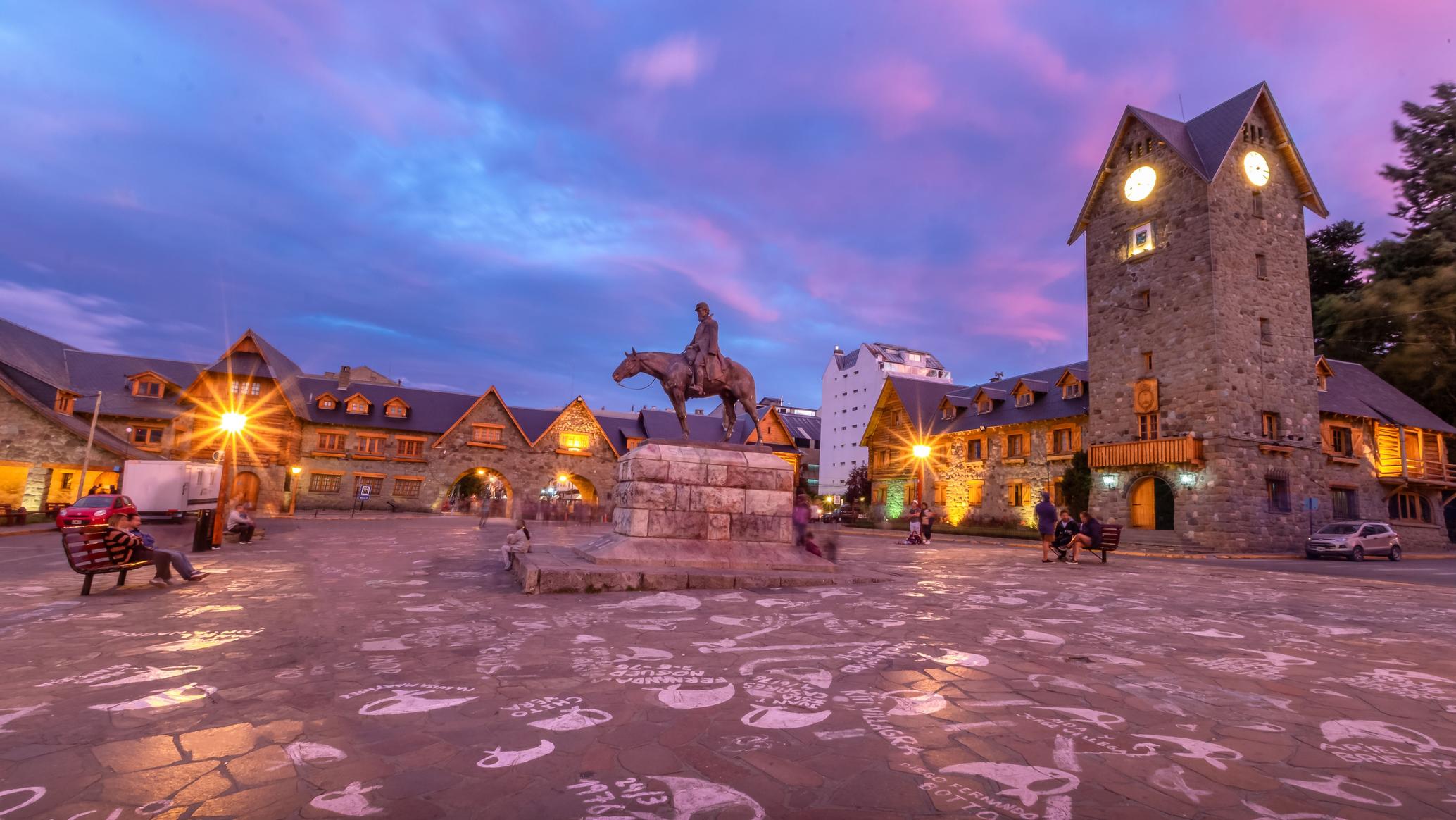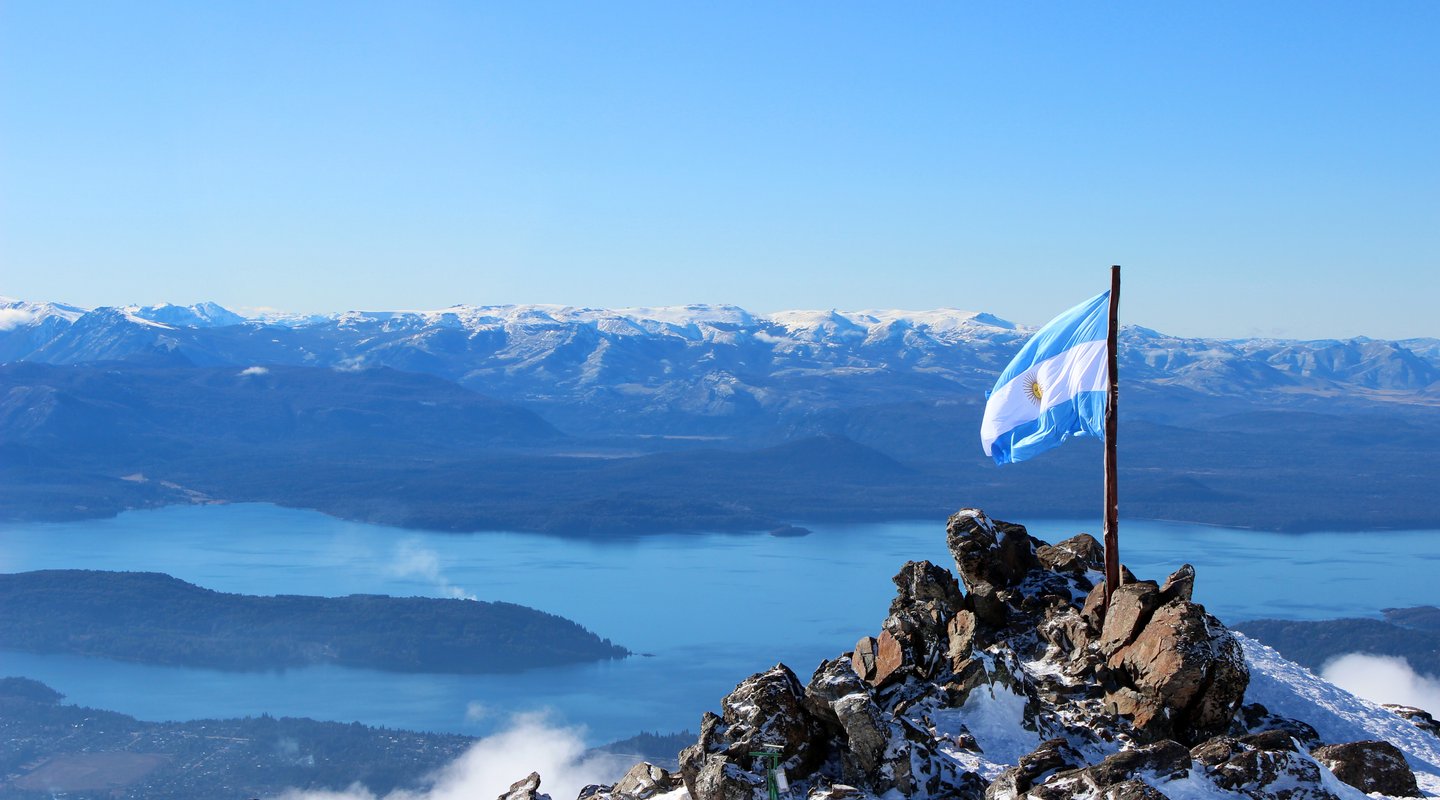



San Carlos de Bariloche (commonly called Bariloche) is a town in Argentina’s Patagonia region. It borders Nahuel Huapi, a large glacial lake surrounded by the Andes Mountains. Bariloche is known for its Swiss alpine-style architecture and its chocolate, sold in shops lining Calle Mitre, the main street. It's also a popular base for hiking and skiing the nearby mountains and exploring the surrounding Lake District. ― Google
Elevation: 893 m
Province: Río Negro Province
Summer (December–March): Great for hiking, lake activities, and outdoor sightseeing. Warm and dry, with average highs around 22°C (72°F).
Winter (June–September): Ideal for skiing and snowboarding in Cerro Catedral. Snow-covered landscapes and cozy lodges make it magical.
Fall (March–May): Crisp air and vibrant autumn colors; fewer tourists.
Spring (September–November): Blossoming forests, mild temperatures, and good for mixed activities.
By Air: Bariloche has its own airport (Teniente Luis Candelaria Airport – BRC) with direct flights from Buenos Aires, Córdoba, and other major cities.
By Bus: Long-distance buses connect Bariloche with cities like Buenos Aires (around 22–24 hours) and Mendoza.
By Car: The scenic Route 40 offers a beautiful drive through Patagonia. Renting a car gives you flexibility to explore nearby lakes and mountains.
One of South America's top ski resorts. Also offers hiking and mountain biking in summer.
A scenic drive with lookouts like Punto Panorámico and Llao Llao Hotel. Great for photography.
The glacial lake surrounding Bariloche. Offers kayaking, fishing, and boat tours.
Argentina’s oldest national park, full of trails, waterfalls, and remote wilderness.
A charming Swiss-style village offering traditional curanto (a dish cooked underground) and artisan markets.
A cable car takes you up to a revolving restaurant with panoramic lake and mountain views.
Boat tours to see ancient forests of cinnamon-colored arrayán trees and pristine island nature.
Learn about Bariloche’s chocolate legacy and taste samples at the end.
Trails in Cerro Campanario, Cerro Otto, Refugio Frey, and Cerro López offer stunning views of lakes and the Andes.
Multi-day treks in Nahuel Huapi National Park are available for more adventurous hikers.
Kayaking, stand-up paddleboarding, and boat tours on Nahuel Huapi Lake.
Swim in Lago Moreno or Lago Gutiérrez during summer.
Circuito Chico: A must-do route with beautiful viewpoints, picnic spots, and short trailheads.
Ruta de los Siete Lagos (Seven Lakes Road): A longer but iconic drive north toward San Martín de los Andes.
Cerro Catedral is the largest ski resort in South America.
Suitable for all skill levels with ski schools, rental shops, and après-ski venues.
Available in Cerro Catedral and other smaller snowy areas.
Trails through forests and along lakes, especially around Llao Llao and Cerro Catedral.
Tandem flights available in summer with epic views of the lakes and peaks.
Ride through Patagonian valleys, forests, and by the lake with local guides.
Thermal baths near Bariloche offer relaxing escapes in nature (some farther out, like in the Epuyén area).
Visit chocolaterías like Rapa Nui, Mamuschka, and Havanna.
Explore Bariloche’s booming microbrewery scene. Don’t miss Cervecería Patagonia for beer with a view.
Enjoy Swiss-style food, crafts, and the traditional curanto meal cooked underground.
Includes panoramic views, a revolving café, and art exhibits.
Explore ancient forests and learn about native flora and fauna.
Luxury: Lakefront resorts and mountain lodges with spas and panoramic views.
Mid-range: Alpine-style hotels and boutique stays with easy access to downtown or the lakeshore.
Budget: Hostels, cabins, and small guesthouses, especially around the city center and outskirts.
Patagonian Lamb: Slow-roasted over a wood fire—rich and flavorful.
Trout & Deer Dishes: Local specialties from the mountains and rivers.
Swiss-Influenced Cuisine: Cheese fondue, smoked meats, and artisan chocolates.
Craft Beer Scene: Bariloche is Argentina’s craft beer capital—many local breweries and beer gardens.
Chocolate Shops: The town is famous for chocolate. Visit stores along Mitre Street.
Influenced by Swiss, German, and Italian immigrants, the town has a distinct Alpine charm.
Known for its artisan traditions, especially in woodwork, chocolate making, and wool goods.
Locals are warm and outdoor-loving. Festivals like Fiesta Nacional del Chocolate (during Easter) showcase the town’s cultural pride.
Nature and eco-tourism are deeply embedded in the regional identity.